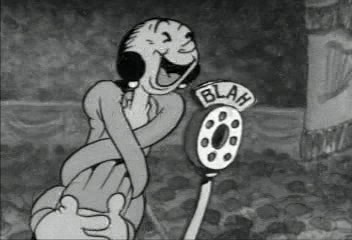



 Late 20s, early 30s: Characters are made of simple torso shapes. Limbs are tubes that have no pliability. They are even widths from one end to the other. When they bend, they bend mechanically in the middle, not towards one end or the other.
Late 20s, early 30s: Characters are made of simple torso shapes. Limbs are tubes that have no pliability. They are even widths from one end to the other. When they bend, they bend mechanically in the middle, not towards one end or the other.

 The macaronis can stretch but generally stay the same widths from end to end.
The macaronis can stretch but generally stay the same widths from end to end.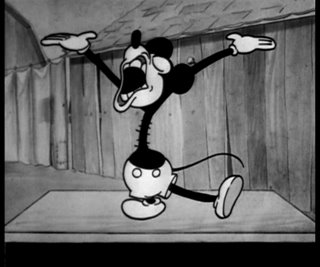 They gradually start to loosen up and get more organic.
They gradually start to loosen up and get more organic.
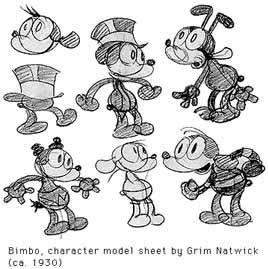
 The tubes are not the same with from one end to the other and they don't bend exactly in the middle
The tubes are not the same with from one end to the other and they don't bend exactly in the middle
40s
 By the early 40s the arms and legs are more flowing, not as mathematical as in the 30s.
By the early 40s the arms and legs are more flowing, not as mathematical as in the 30s. The bends in the curves have more variation.
The bends in the curves have more variation.

 By the early 40s the arms and legs are more flowing, not as mathematical as in the 30s.
By the early 40s the arms and legs are more flowing, not as mathematical as in the 30s. The bends in the curves have more variation.
The bends in the curves have more variation. The tubes are not perfect tubes anymore. The shapes fluctuate according to the needs of the poses. Knees and elbows become slightly angular.
The tubes are not perfect tubes anymore. The shapes fluctuate according to the needs of the poses. Knees and elbows become slightly angular.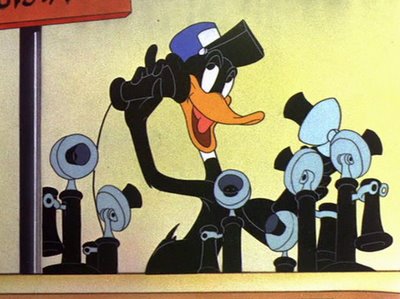 Mid 40s bent elbows start to feel slightly anatomical under the flesh.
Mid 40s bent elbows start to feel slightly anatomical under the flesh.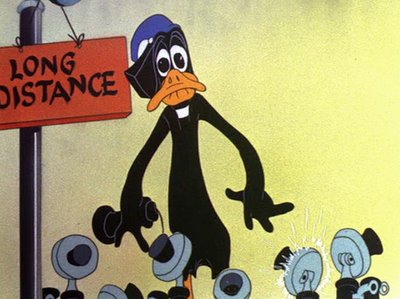 But poses still feel fluid.
But poses still feel fluid. Characters now have evolved cartilaginous soft skeletons.
Characters now have evolved cartilaginous soft skeletons.Drawing with a mixture of rubber hose like tubes and more distinctly shaped bends and joints allows a greater variety of more specific poses - and thus richer acting.
 Arms and legs lose their elbows and knees when straightened. Limbs tend to be bell-bottomed rather than even widths at both ends.
Arms and legs lose their elbows and knees when straightened. Limbs tend to be bell-bottomed rather than even widths at both ends.
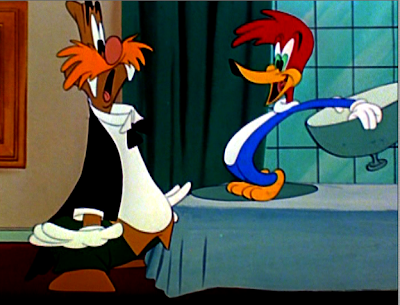 The 40s was the period where animators used the most drawing tools and variables to get very fluid and contrasty animation. They had more tools at their disposal and used them with greater control than any generation has since. That's what made it the Golden Age of Animation.
The 40s was the period where animators used the most drawing tools and variables to get very fluid and contrasty animation. They had more tools at their disposal and used them with greater control than any generation has since. That's what made it the Golden Age of Animation. 50s
50s Characters' structures stiffen, more emphasis is placed on the ossifying joints.
Characters' structures stiffen, more emphasis is placed on the ossifying joints. This is the arthritic period of rubber hose animation. Characters can still loosen up for broad actions, but in general are less pliable than 40s characters.
This is the arthritic period of rubber hose animation. Characters can still loosen up for broad actions, but in general are less pliable than 40s characters.
 By the end of the 50s stiffness became the standard. After that, the combination of skill and appeal pretty much vanished.
By the end of the 50s stiffness became the standard. After that, the combination of skill and appeal pretty much vanished.


